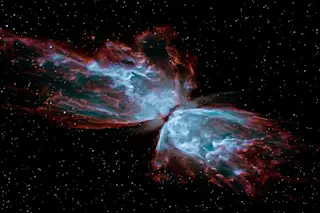Nothing on the tree-less plains of western Argentina seems to expend much energy. Cattle stand nearly motionless as they graze on the thin grass, which grows slowly in the dry heat and high altitude. A cylindrical water tank with a small solar panel and a skyward-facing antenna sits unobtrusively in the nearly motionless landscape. But hidden within this scene is plenty of drama. At any given moment, millions of projectiles from deep space are raining down, penetrating every object in their path. Each particle then vanishes without a trace—unless it happens to pass through the water tank, where it causes a minute spark visible to scientists thousands of miles away.
The tank is one of 1,600 spaced out at one-mile intervals over 1,100 square miles of land, an area bigger than Rhode Island. Collectively they make up the Pierre Auger Cosmic Ray Observatory, a $50 million physics experiment to study ...














